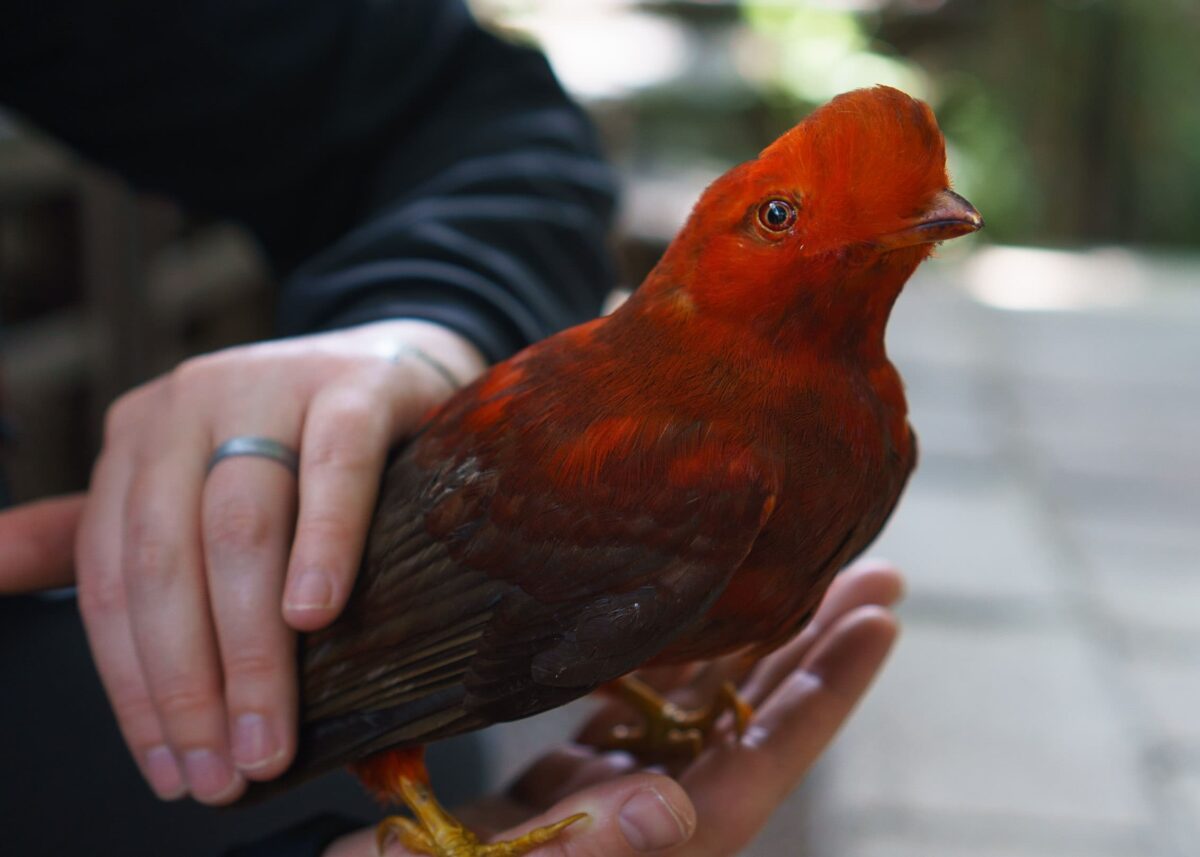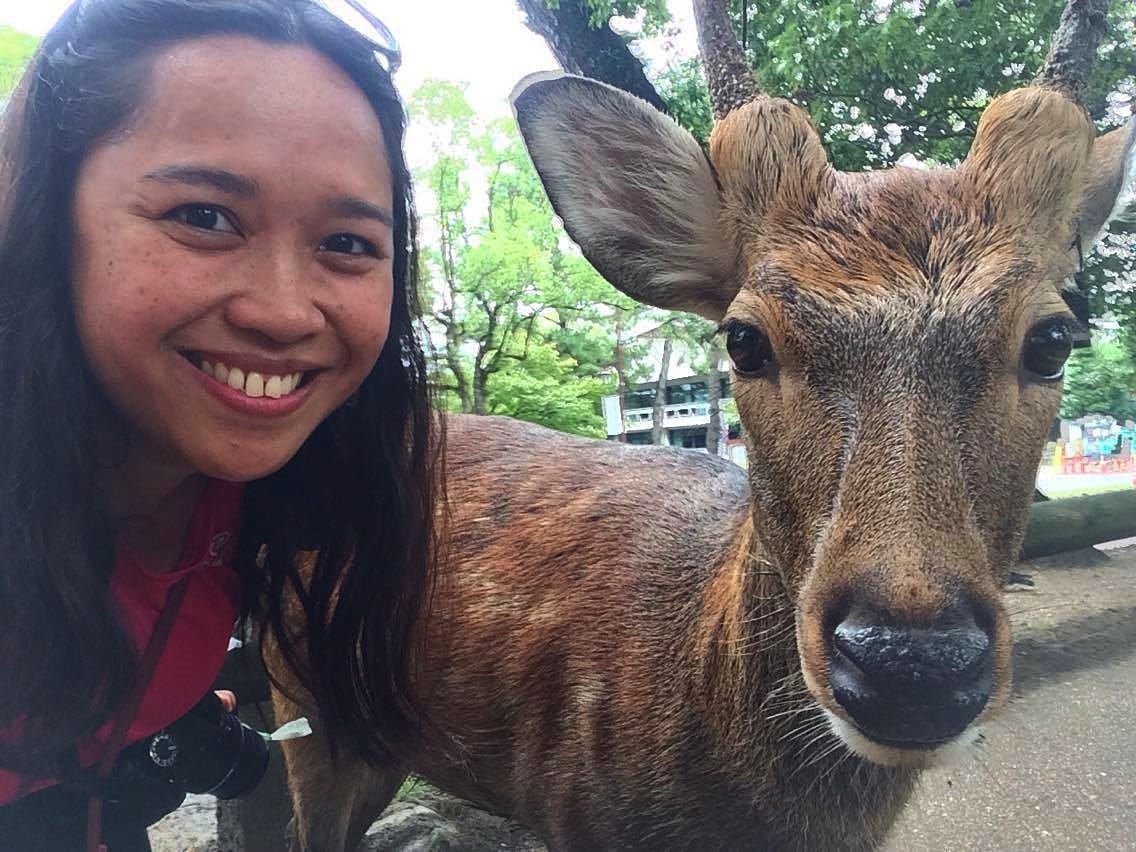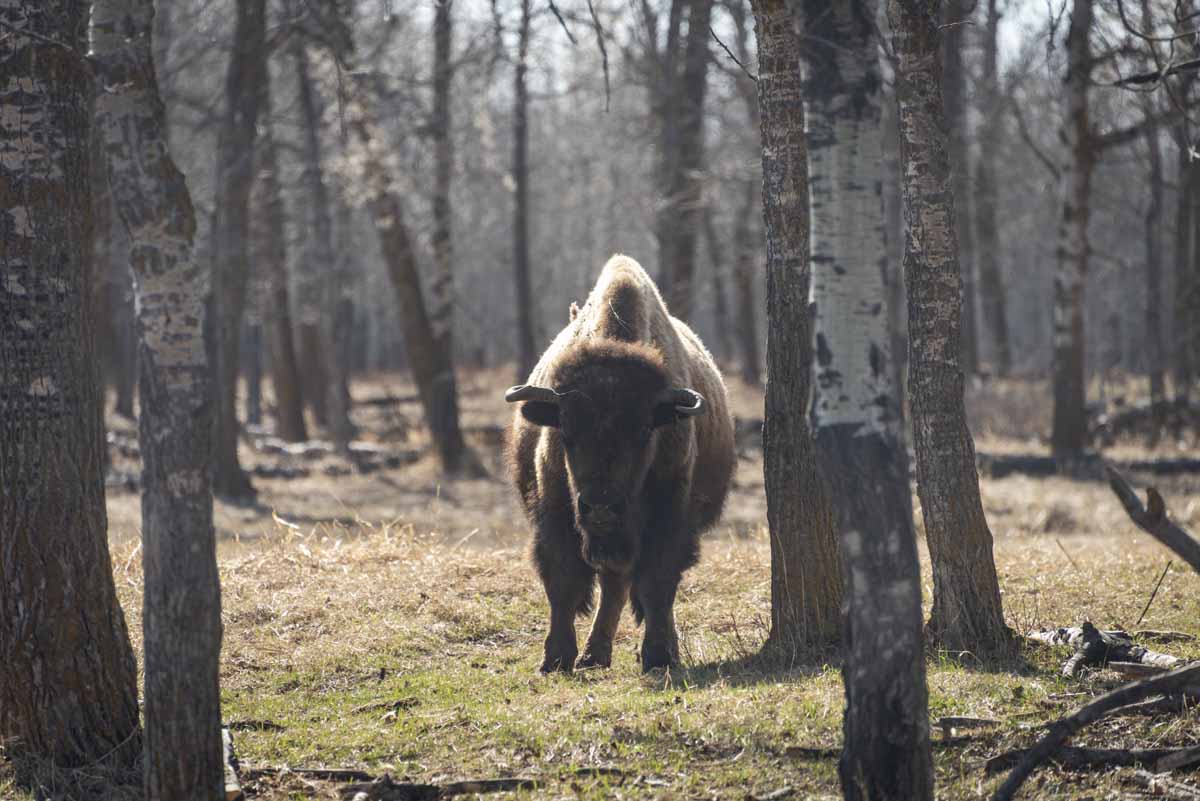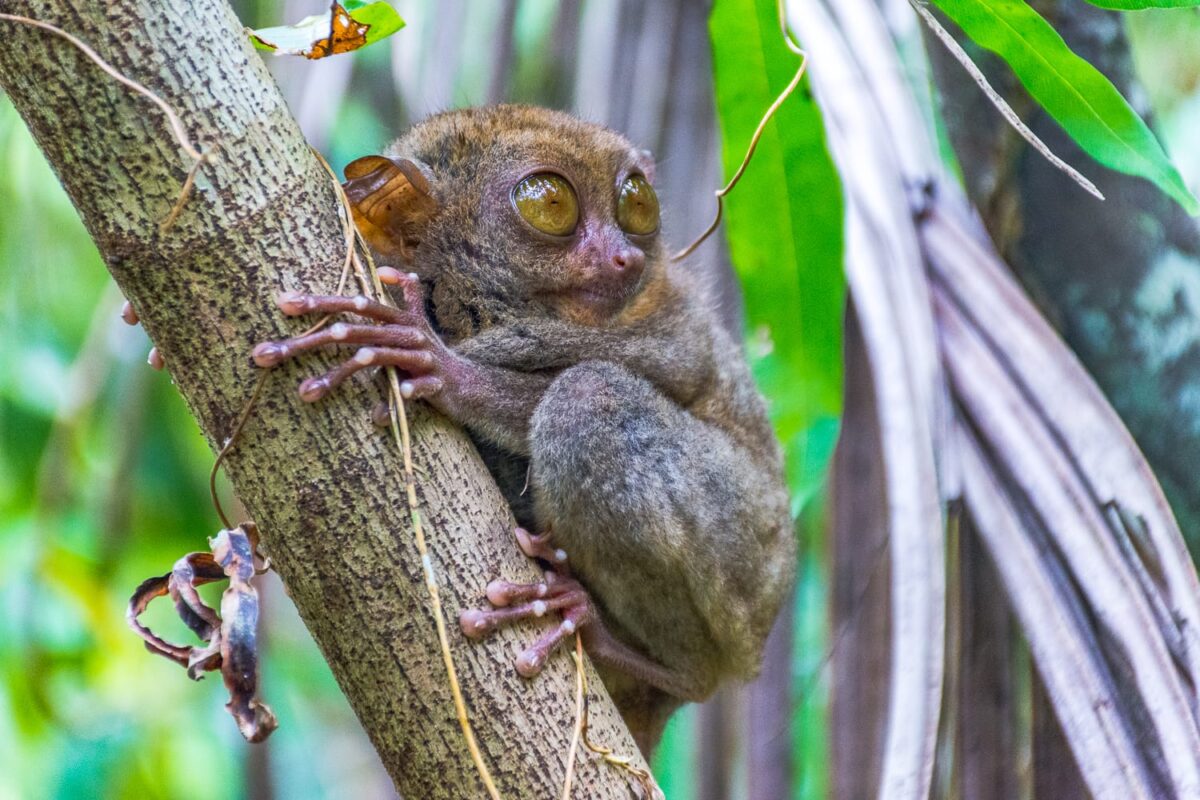Animals we met when travelling
Most of us travellers are animal lovers, many are vegetarian and vegan and we all have hearts that are deeply moved by animal neglect and harm, and we want to ensure that we have animal-friendly travel experiences.
We don’t want to harm animals or the planet when we travel so we abstain from visiting animal attractions unless they are specifically geared towards animal conservation and preservation. I don’t know about you but travelling in Ireland and Spain we always had some apples or carrots in the car to feed the horses and goats we found along the way.
We avoid elephant rides or bear circuses. We pet sit and house sit so we get lots of animal hugs and love while on the road.
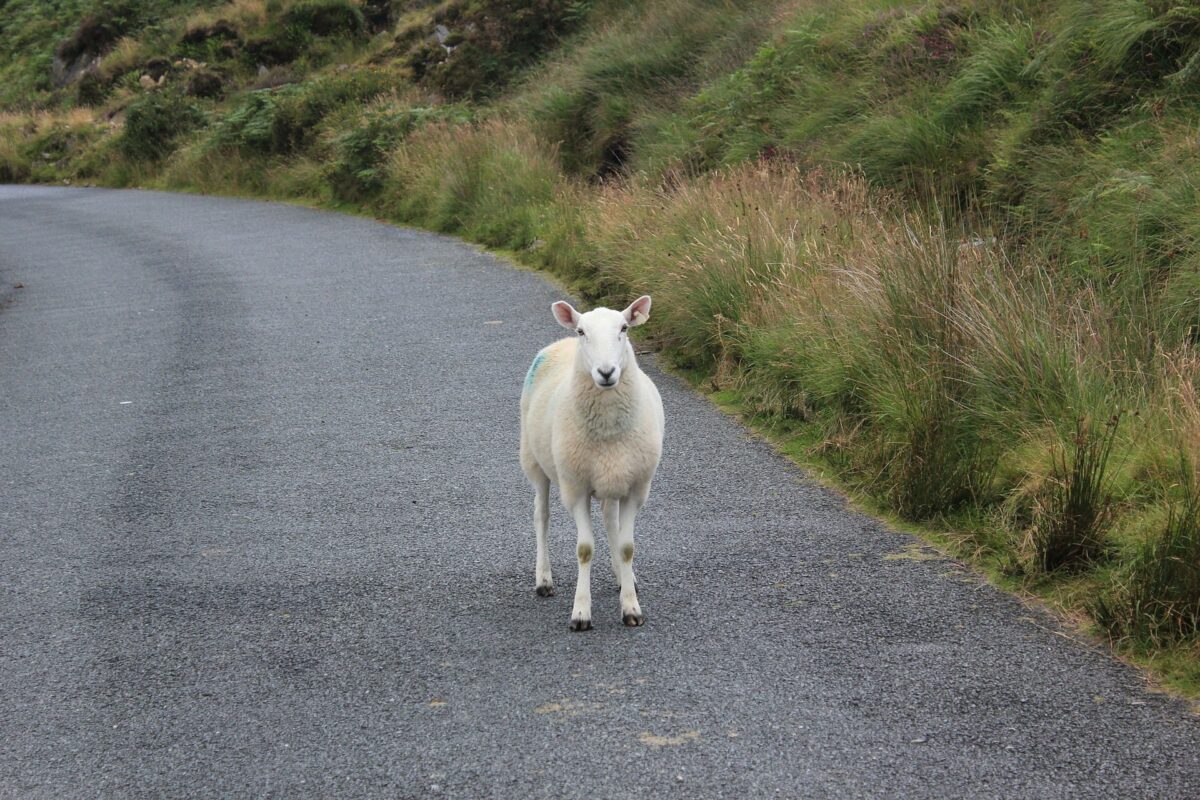
We want everyone to connect on deeper levels with our animal companions and help create a clean and sustainable planet for us all. Here are a few things you can do to ensure your holiday is animal-friendly.
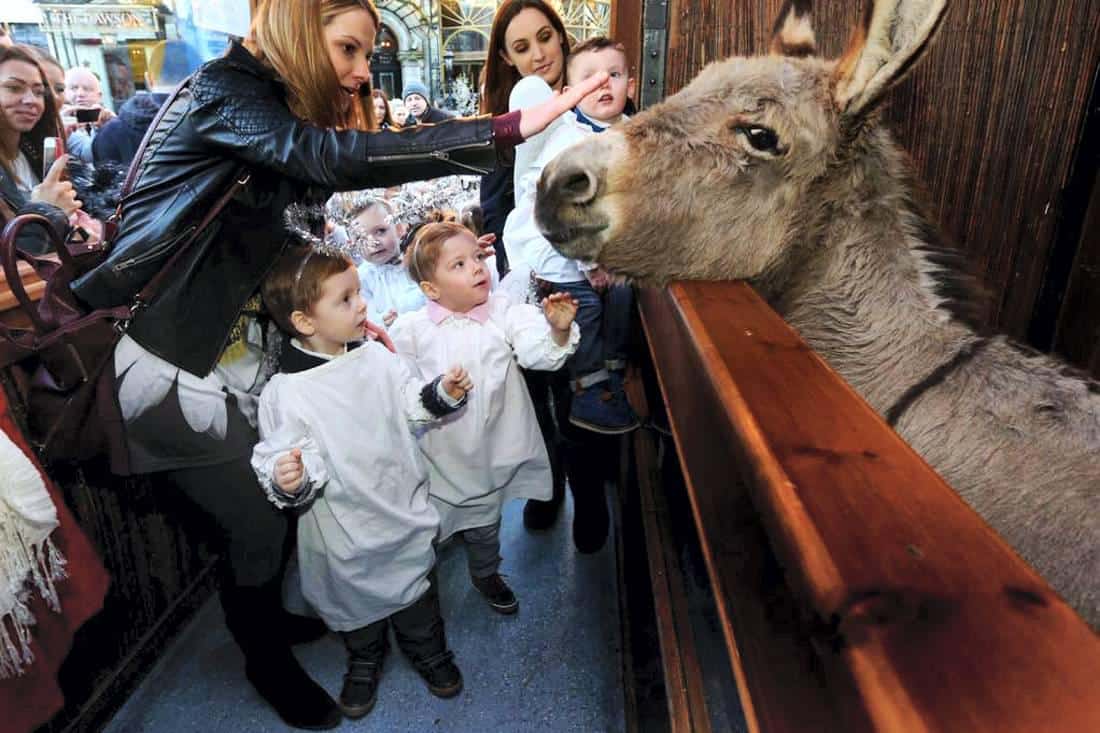
8 Tips to an Animal friendly holiday
- Does your tour operator or guide have an animal welfare policy? Make sure they do.
- Don’t eat the animals – avoid any foods or local dishes that include wild and endangered animals. Things like local bushmeat or products made from caged animals like civet coffee. Ensure that the food you are consuming is locally grown and produced but does not come from caged or badly treated animals.
- Wildlife belongs in the wild, don’t visit zoos or farms where animals are kept captive to entertain visitors. Visit conservation zoos or animal parks that have the specific mission to either preserve endangered species or help with breeding programs and eventual wild release.
- Avoid at all costs any souvenirs made from wild animals. This includes products with fur, feathers, ivory, shells, seahorses, teeth, turtle shells, rhino horn, alligator skin or certain leathers.
- It is not fun to be captive in an aquarium. Mammals are meant to roam the seas not play with tourists in a swimming pool.
- Don’t ever pay to have your photo taken with a wild animal. A drugged bear does not make a good selfie, and a dead animal is nor for your Instagram feed.
- And finally, do not ride an elephant or go to an elephant park where they are “working”. This is simply cruel and should be avoided at all costs.
Sometimes you just feel that animal connection it doesn’t matter what kind of animal, where you see it, or how. It’s that moment when you hold your breath and feel that somehow something passes between you and the animal. I am most defo not an airy-fairy person who believes she can talk to animals or somehow we can communicate with them (well that’s not true I do believe they can understand the love we give them).
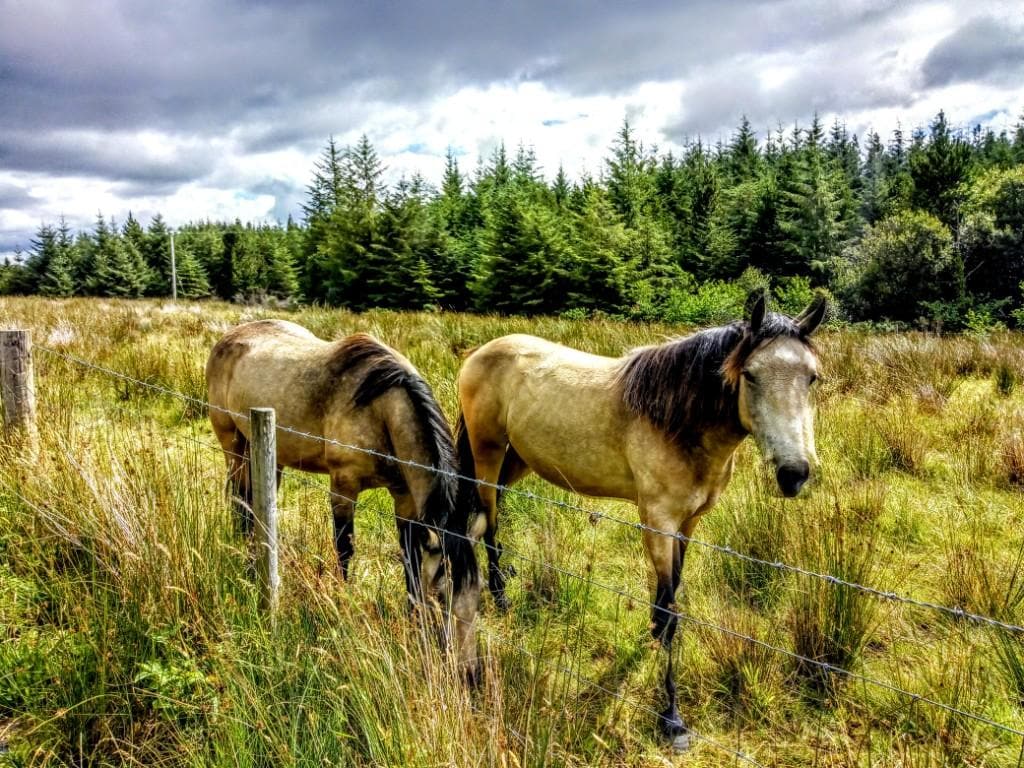
But, I have felt a connection with many animals, not my own or not anyone’s pet. Some are truly wild, some are simple like a calf yearning for some company when rejected by her mother. A crazy sheep kickin up its heels and running free from the fences on a narrow Irish road.
It’s watching puffins on a sea cliff with a mouth full of fish. Taking a heart-stopping whale-watching tour in Kaikoura New Zealand and feeling deep in your bones the immense beauty and calmness of these giant beasts.
As a traveler, I have been lucky enough to fall in love with what I call heart animals all over the world. This article came out of my need to see if others have the same heart animals or have met them in their travels. As travel can be a lonely venture if you are an animal lover and can’t have pets on the road. So here are some moving tales of travellers and their heart animals.
Travel Writers on their animal encounters
A cat in Egypt
Sometimes you make a friend. Not all friends are human. My husband Shawn and I finally finished up roaming around the city of Alexandria, Egypt. We were exhausted, due to catch a train in a couple of hours and decided to relax on one of the many beaches. The one we choose was a private beach linked to our hotel. We barely sat down when I noticed a black cat moving around in the distance. I love cats and after being away from my own cat for a couple of weeks I instinctively called out to it. Imagine my surprise when this full-grown tomcat came bounding straight into my arms. I kid you not! He was almost 30 feet away. Not only did he want attention, he wallowed in it.
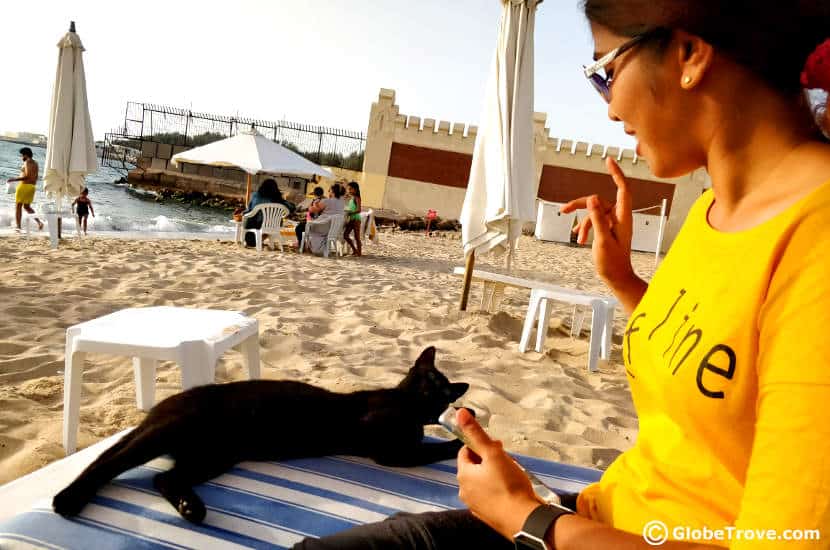
The sneaky guy jumped up onto our sunbed and rolled over giving up his belly for rubs. He literally drooled as we petted him. He was in ecstasy and so were we. When he realized that he hadn’t given Shawn enough attention, he switched and jumped straight on Shawn’s lap.
The intriguing thing is that we were feeling low just before he came. We had been away from our baby (cat) for almost four weeks and we missed her terribly. Somehow this queer little gorgeous feline knew. He knew that we needed him, and he wasn’t afraid to spread the love. When I look back at all the times animals have comforted me, this is one of them that pops into my head. Don’t get me wrong, I love all animals but if you want to talk about the recent one that captured my heart, then it was him! from Penny at Globe Trove
Teenaged Sperm Whale
On a bright, spring morning, we were cruising around the Sea of Cortez on a Zodiac, looking for dolphins to swim with. We were actually diving from the Rocio Del Mar liveaboard in Mexico, and that day was our “dolphin day.” There were two groups, both in Zodiacs, each looking for a pod of dolphins. We did find dolphins, but they had no interest in us, so we decided to leave them alone. The other group of divers decided they’d had enough and returned to the Rocio.
Our guide, however, had a hunch and he decided to look around some more, perhaps for a different, more curious pod. We never did find a new pod. But something better happened that day: about 50 meters from our small boat, a juvenile Sperm Whale came to the surface. Our eyes must have been as wide as saucers and we all got into the water as quietly as we could to try to catch up to the whale. We swam as fast as we could. It’s really hard to catch up to a whale, even when it’s swimming slowly! I had a GoPro. Michael had an underwater camera.
Our experience with this Sperm Whale was short – she left us for a deep dive about a minute into the adventure. But the whale left a lasting impression on both of us. We’ve seen so many wonderful creatures during our years of diving – sharks, dolphins, manta rays, sea lions. But this lone whale in a vast expanse of water allowed us to visit with her for just a minute. She was “our first.” And she provided us with an incredible experience – one neither of us will ever forget. by Michael and Halef of thertwguys
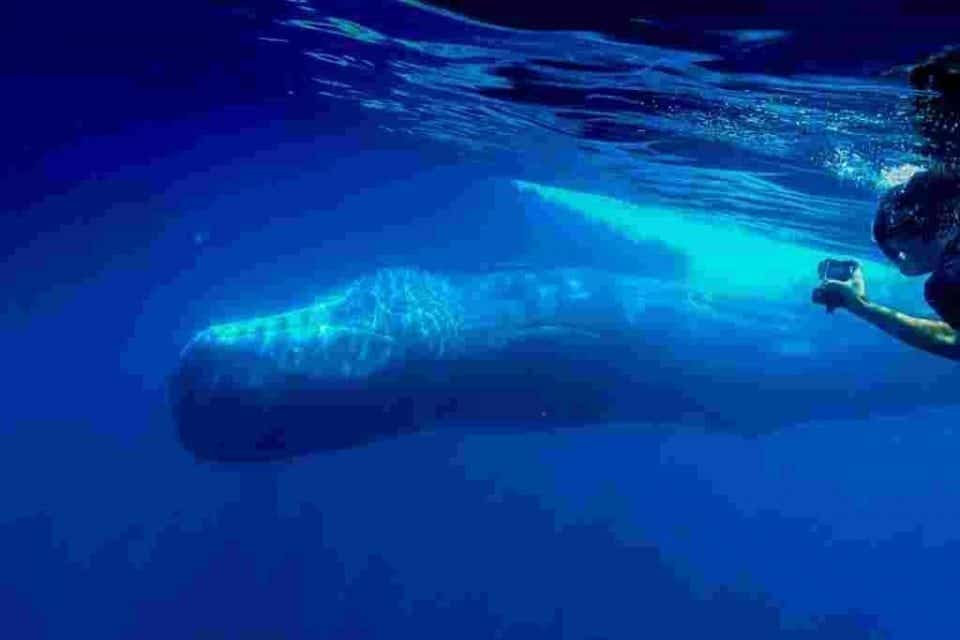
Giant Pandas
I have encountered many animals on my travels but I especially loved seeing the adorable giant pandas in China. Most readily found around Chengdu in the Sichuan Province, it is easy to see why giant pandas are proudly referred to as a national treasure. Visitors keen to observe numerous pandas in action can head to one of the nearby research and breeding facilities dedicated to the preservation of giant pandas. You can learn all about the pandas and preservation efforts while taking in the cuteness around you. And you know those popular online videos of adorable baby pandas playing? It is even better watching their antics in person!
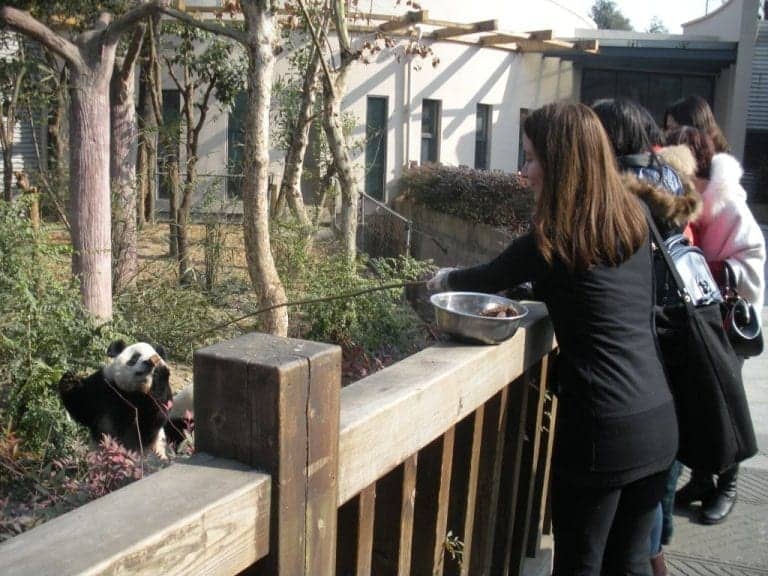
I even paid extra to sign up for a half-day panda keeper volunteer program which gave me the opportunity to get closer to pandas and learn more about them while assisting the panda keepers with their duties. I helped make panda cakes and cleaned their cages by removing bamboo and panda poop – not as bad as it sounds because their poop does not smell.
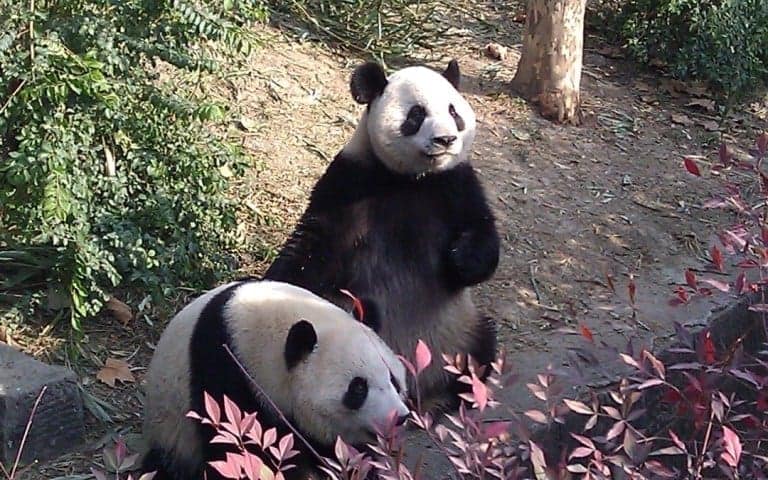
One of the highlights was feeding the pandas myself. The pandas really enjoy treats (in addition to panda cakes they really love apples) and would almost plead for food. I fed two twin pandas and the older twin would even push down his twin to get all the treats for himself! It was an amazing experience being so close to these adorable animals. by Matilda of The Travel Sisters
Grey Whales – Baja
Going to whale watch at Guerrero Negro was such a moving experience. I visited the whales in Ojo de Liebre Lagoon, which is the nursery and breeding grounds. It was near the end of the season, so my expectations were rather low.
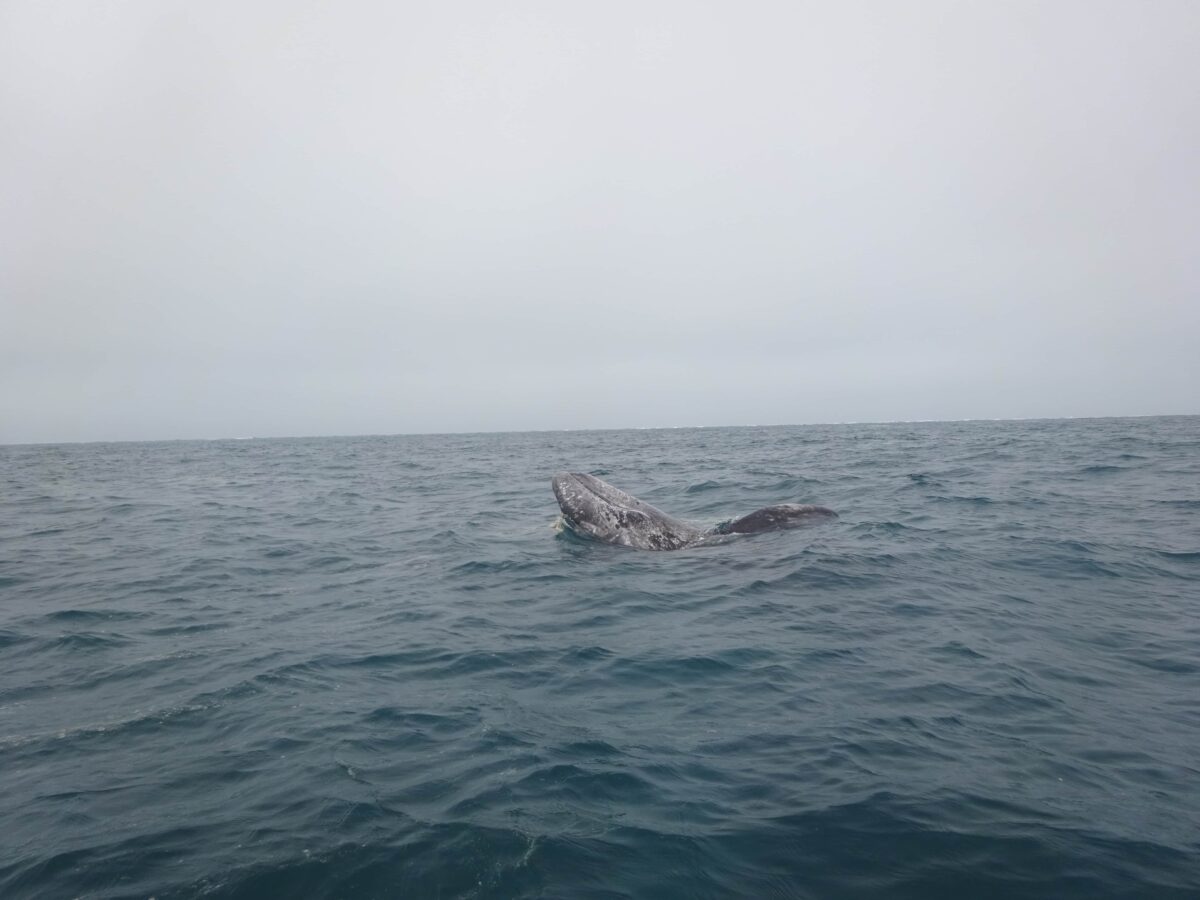
However, as we were out on the boat we saw several grey whales in the distance. Some were jumping, this in itself was better than I’d hoped for. But soon the whales came closer and closer. The engine of the boat was turned off and mothers and calves literally surrounded us. They swum under the boat came to the surface and actually looked at us humans. The calves came close enough to touch (under their mother’s watchful eye) and they kept coming back.
I cannot explain how incredible this experience was. To actually touch a wild whale calf and have it come back for more. It moved me in the sense that you can see how intelligent these animals are. They are looking at you and watching you, they give you eye contact. They are just as curious about other creatures as we are. It was humbling to see these majestic creatures and realise their different personalities in such a short time. Some of the calves were much more confident. To see a wild animal so close and have it watching you back with the same amazement in its eyes, I literally cannot describe it. by Nat of Natpacker
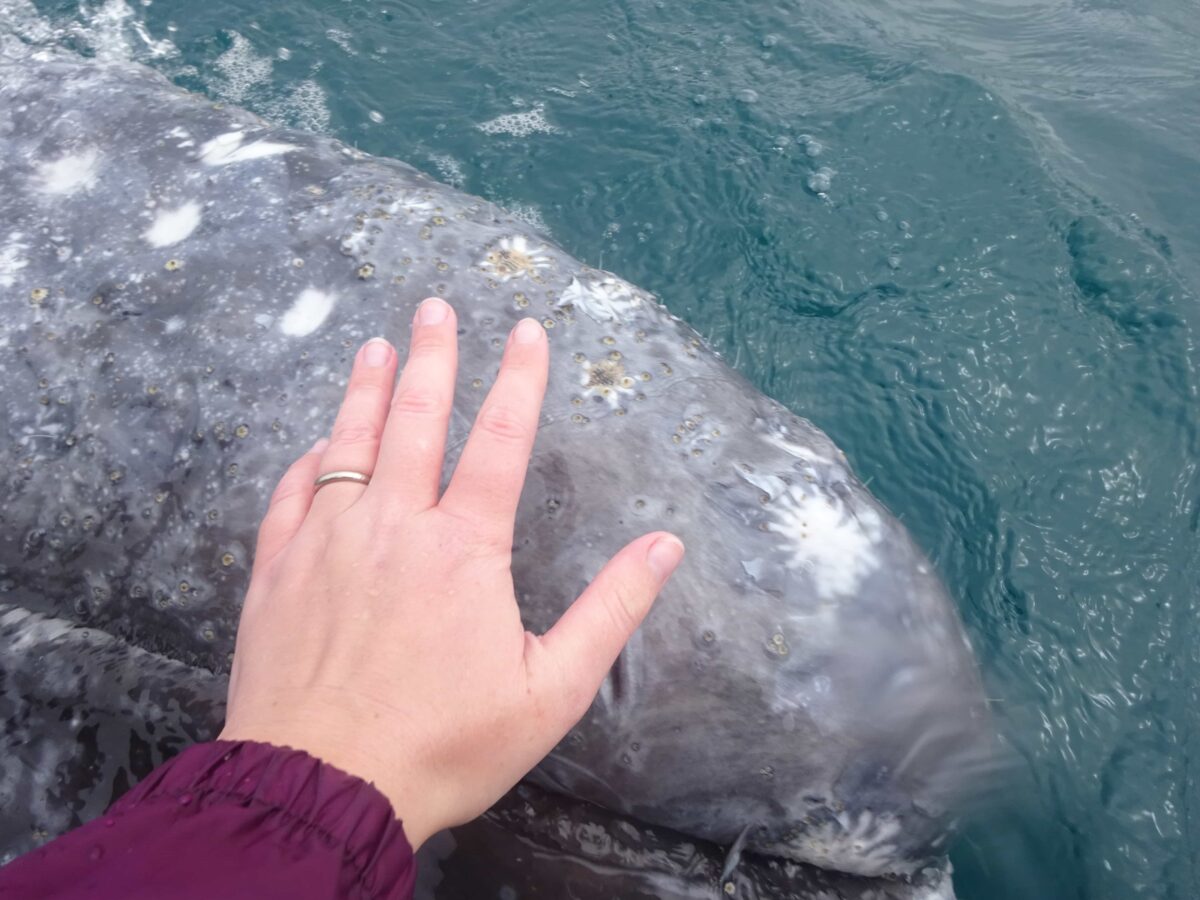
A bear family in the Canadian Rockies
I am always on the lookout for wildlife when my husband and I do road trips through the countryside or when we visit State or national parks. Spotting animals and birds in the wild is a huge thrill and it enhances our experience immensely.
When we visited the Canadian Rockies (Banff, Jasper, and Yoho National Parks), we were in for a treat, as far as wildlife was concerned. We saw so much wildlife, often right on the road or by the side of the road! Elk, goats, big horned sheep, moose, lots of little animals and birds, and…bear!
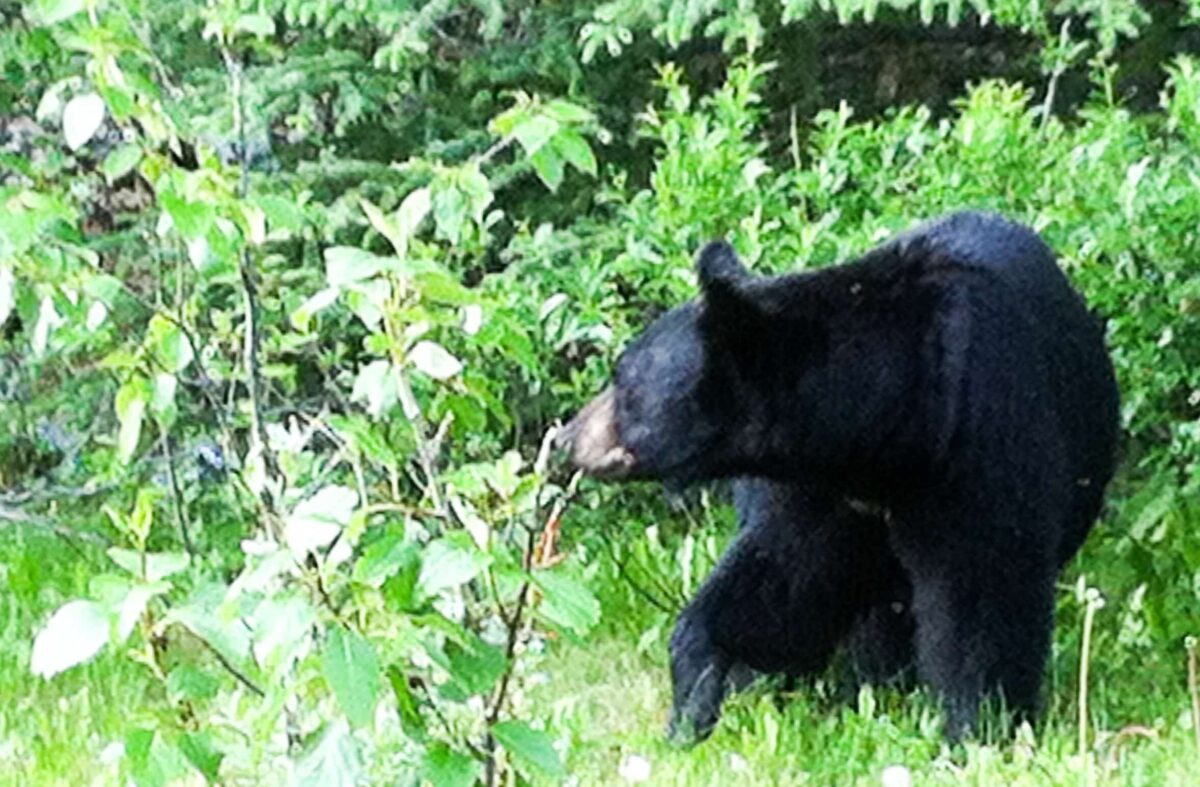
Cars parked on the shoulder of the Icefields Parkway were often a cue that wildlife had been spotted. When we saw a bunch of stopped cars one day during our visit, we stopped too, to be treated to a great view of a mamma black bear and her two cubs. All three were munching busily on the field of dandelions that had sprung up by the side of the road, totally oblivious to the gawking humans. Mamma bear would look up occasionally to scan her surroundings and look at her babies, but otherwise, they were just intent on feasting after their long winter fast. It was so much fun to observe them from our car!
Fortunately for us, the other travellers viewing with us also followed guidelines to view animals from the car, so the bear family was not frightened away, and we were able to observe them for a long time. This was my favourite wildlife encounter from that visit. It was so much fun to see animal motherhood in action! Dhara of Not About the Miles
Mountain Sheep in Pradesh
It is always a great feeling to spot animals while you are on an uphill trek or trip, it makes the journey more spirited and a real achievement. Animal spotting is a matter of luck in any region excluding city zoos where they are not readily traced or hide due to fear and anxiety after seeing human beings.
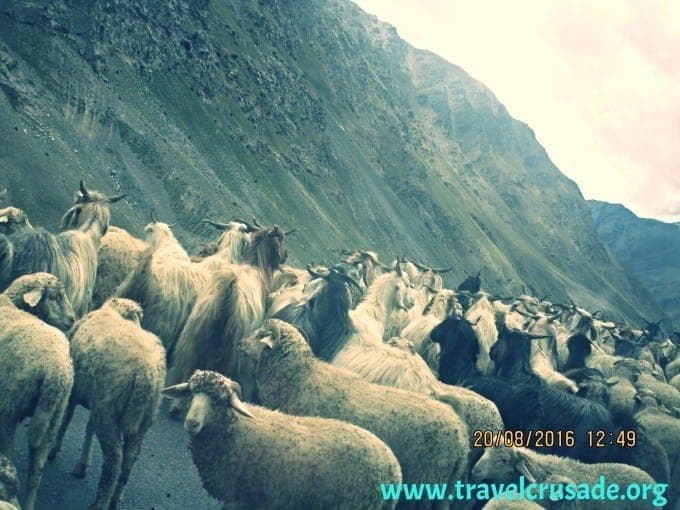
I was fortunate enough to catch hold of some mountain sheep while I was on my way to one of the high rising peaks of Himachal Pradesh, India.
I was travelling in a car when I could spot them in a herd along with their master while climbing uphill. It was a tough climb and the driver had to make a lot of adjustments along the way. These animals were spotted exactly along the route to the high rising mountain pass after which they disappeared from our sight in a short span of time. The entire region was foggy and the temperature began to dip suddenly after the sunlight began to disappear during the early afternoon hours. from Somnath of Travel Crusade
Meeting the world famous Sora
I had been following the adventures of Sora since I started blogging and opened an Instagram account, back in 2015. I was fascinated by the fact that she travelled the world, with her humom and dad, who went around by bike. I loved what she did: raise awareness for less fortunate dogs, encouraging dog owners around South America to sterilize their pets and take proper care of them.
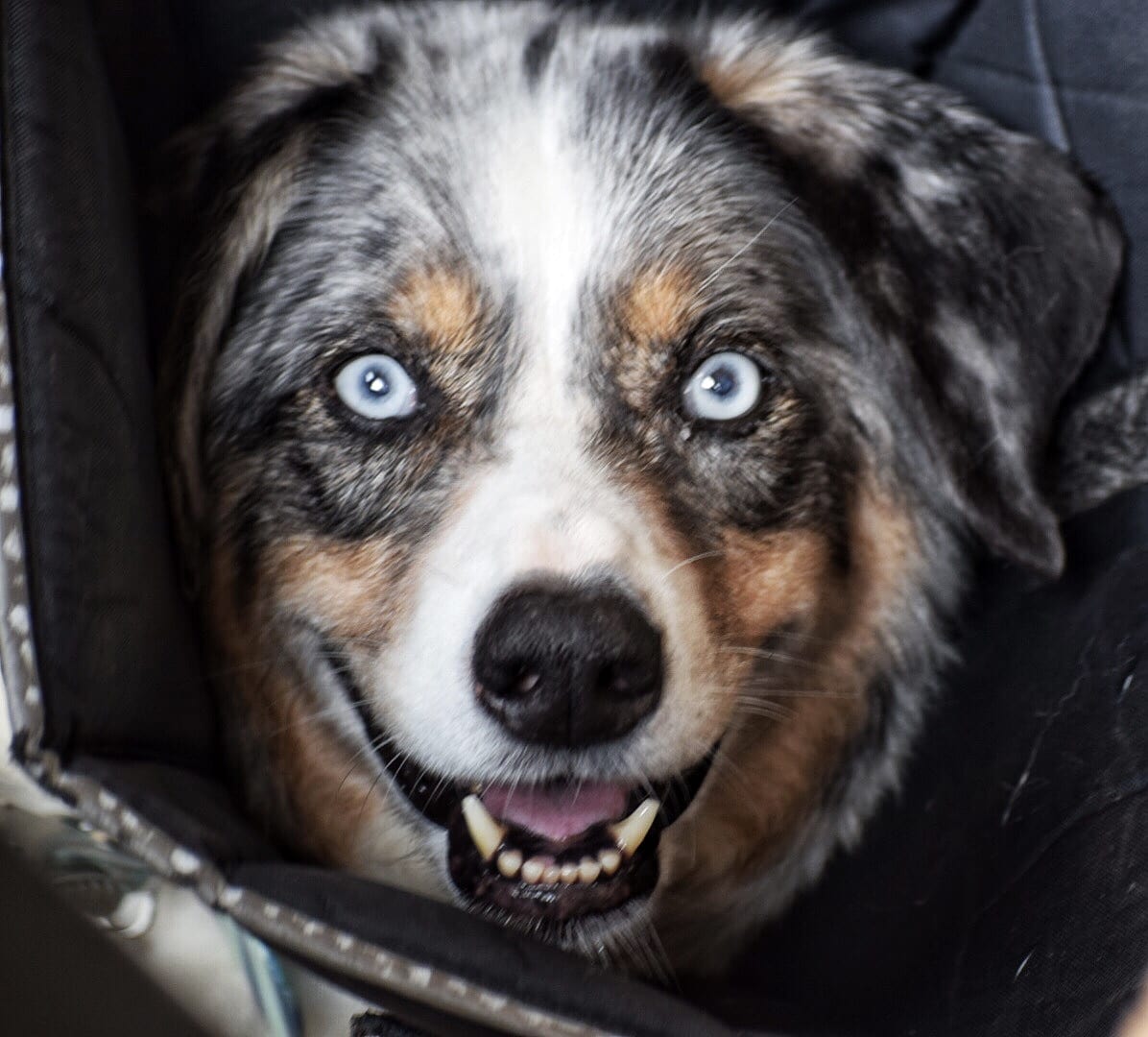
Being based in Europe, and with her family constantly on the move, meeting Sora was not easy. Her parents and I had tried to make plans but our work commitments regularly got in the way. We’d have to be Instagram friends for the time being. Then finally, in April 2018, Sora and her parents moved to Spain and our world became closer. I bought a plane ticket to meet them in the Pyrenees and was delighted to see that Sora also finally had a sister, Leila – also known as La Loca.
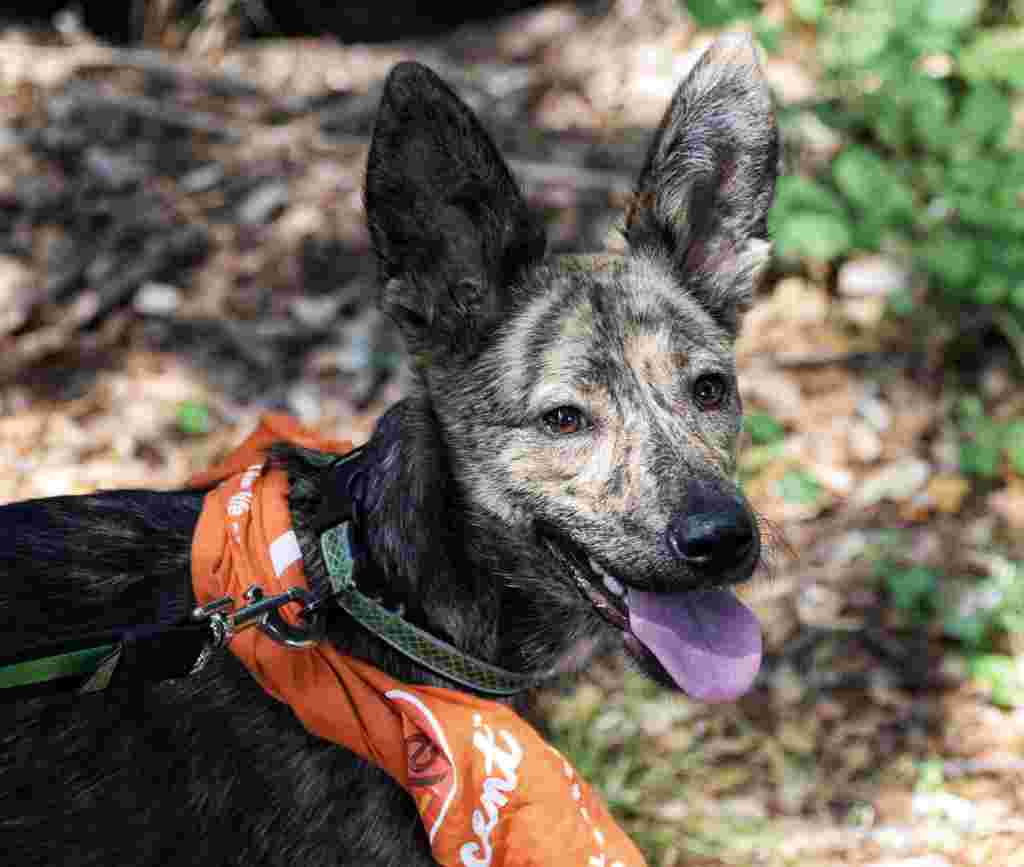
Sora has endured a lot: a series of consecutive surgeries to remove a tumour on her paw, and then radiotherapy. But that hasn’t affected her spirit, and she continues travelling to spread her love message. Meeting her in Spain was a thrilling experience. I was worried that, in real life, she wouldn’t really like me, she’d be afraid of me. My worries went away when she kissed me, she sat with me, and she jumped on my bed to sleep with me. I knew there and then that we’d become soul mates. by Claudia of My Adventures Across The World
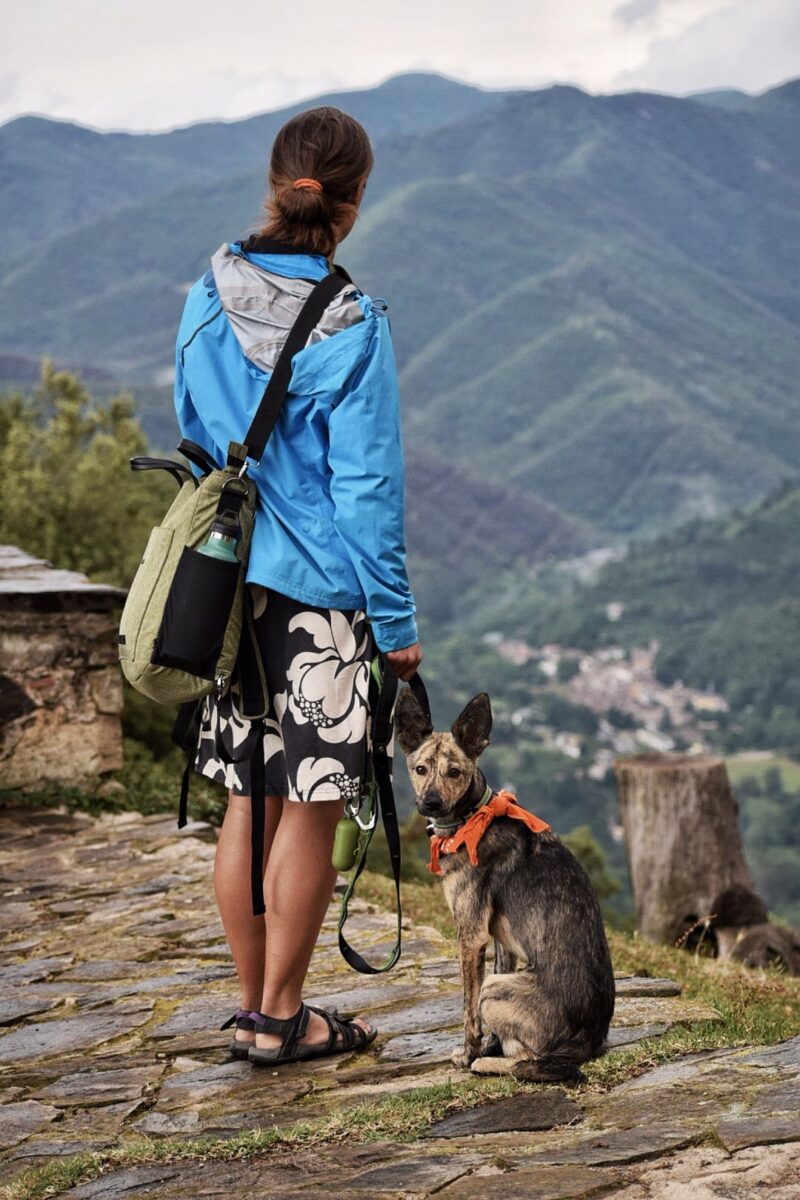
Cute Quokkas
The quokka is a native marsupial to Western Australia, specifically Rottnest Island, a small pocket of paradise just off the coast of Perth. I first heard of these furry friends after they went viral as the “happiest animal in the world”, and when I planned a trip to Western Australia I just knew I had to try and see them for myself!
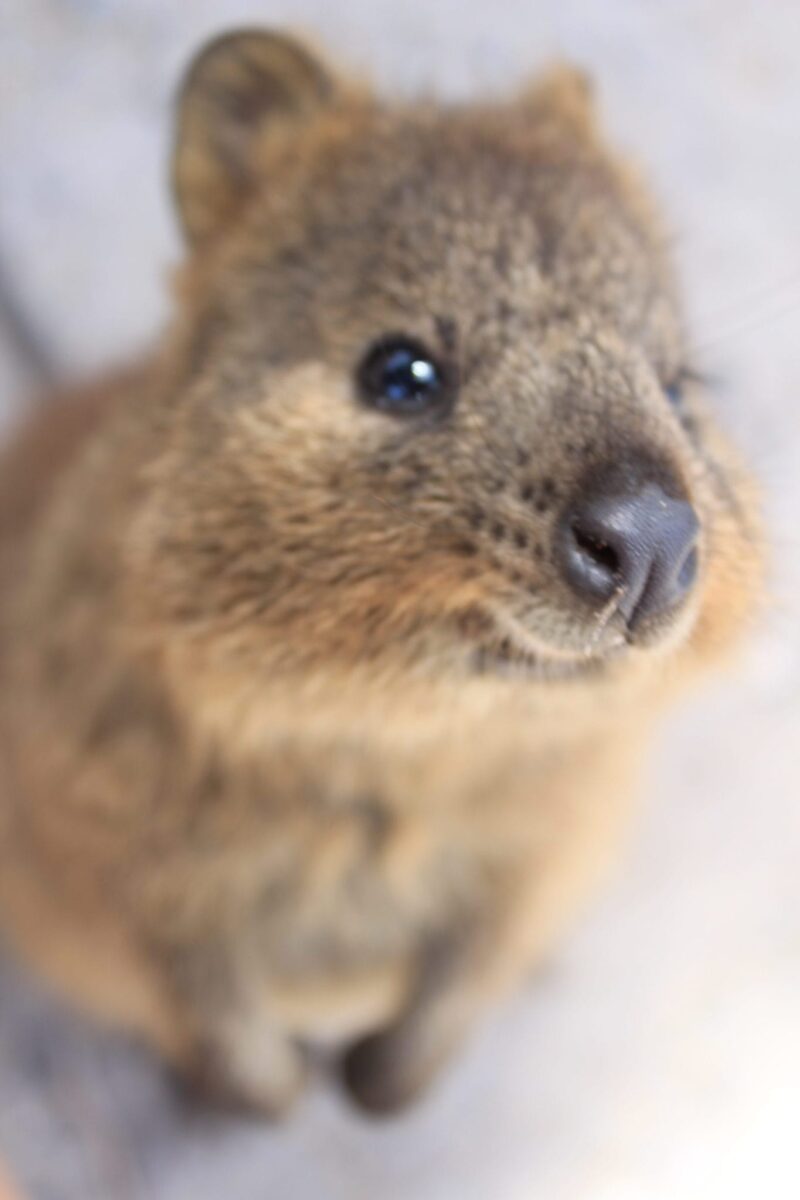
On arrival to Rottnest Island, I was sceptical as to whether we’d see any, I wasn’t sure how many there’d be! There was no need to worry, however, as they are absolutely everywhere! These sociable little guys are so adorable, with tiny chubby cheeks and an innocent, friendly stance. They love to come and investigate, give you a sniff and a smile, and are so docile they’ll happily pose for the iconic Quokka Selfie!
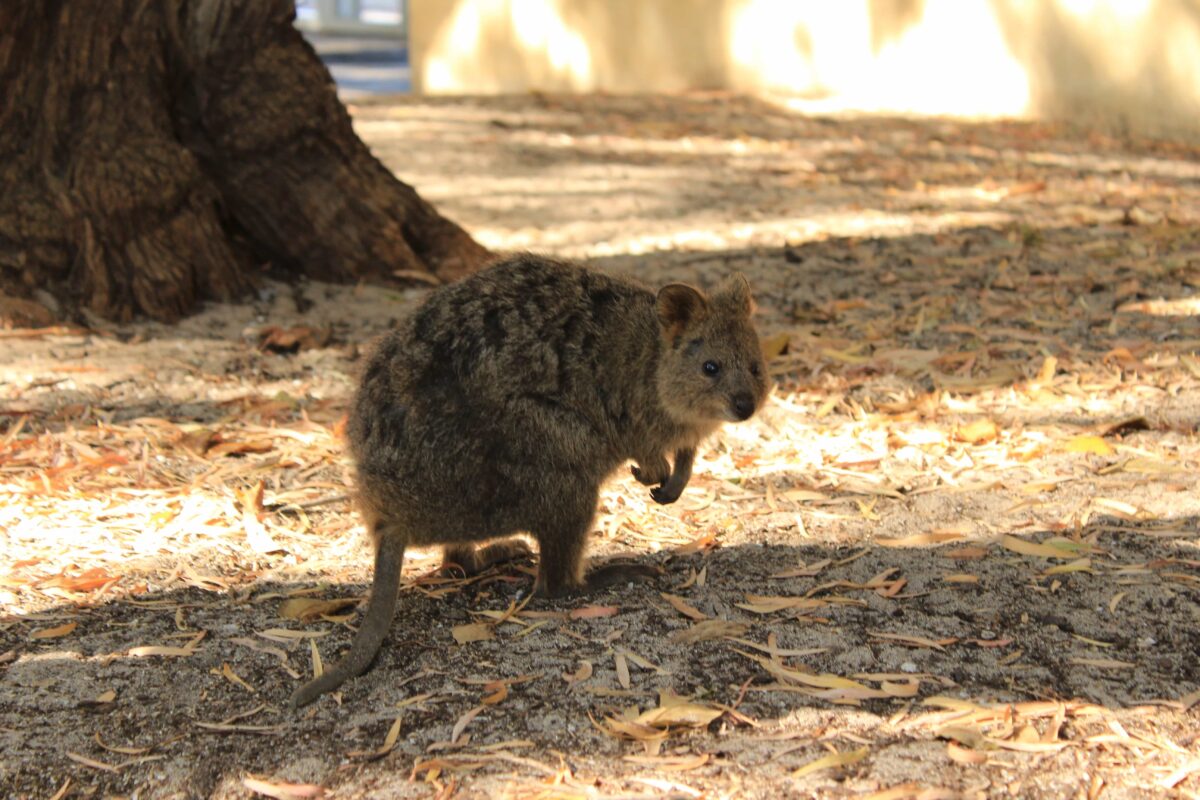
As soon as I saw my first quokka I knew we were kindred spirits. Chilled out, loves food, a bit inquisitive – I was definitely one in a former life! Even by my 4th, 5th, even 20th quokka encounter (there are just so many!) I loved seeing them munch away and hop about their homes. They might not be the biggest, the smartest, or the strongest; but I’d say happiest is a pretty decent accolade to hold on to! by Suzy of Suzys Stories
Mantas in the Maldives
For my last semester at university, I decided to do an internship in an island-resort in the Republic of Maldives. The island I was working on is located near Malé, the capital of the Maldives. I couldn’t have planned the time of my internship better since it happened to be Manta-season in the North Malé Atoll during my stay. In my free time, I could join the tours offered by my resort if they weren’t fully booked. So, of course, I wanted to join the Manta snorkelling tour. Before that, I had seen mantas only in pictures, so I had no idea how big they would actually be in real life.
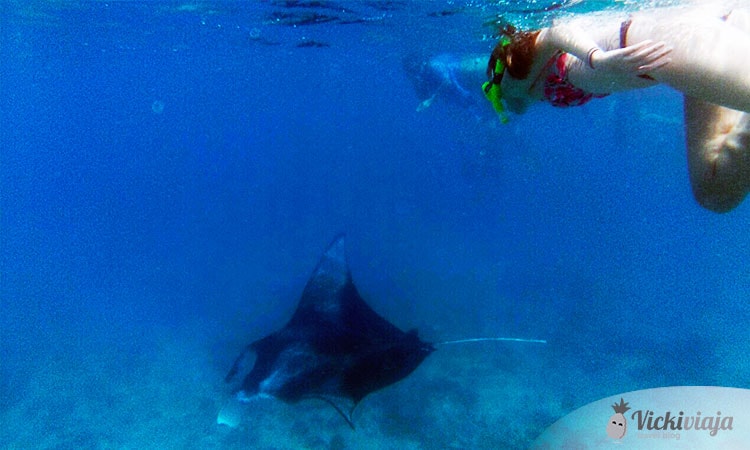
At first, we couldn’t find any Mantas at the Manta spot which was like a 30-minutes boat ride away from my island. One of the crew members climbed on the roof of our speed-boat to be able to spot the mantas in the crystal-clear water of the Indian Ocean. And suddenly they appeared out of nowhere. We jumped in the water as fast as we could to snorkel with these impressive creatures. With its almost 3-meter length, I was quite happy that mantas are vegetarian and only filter the plankton out of the water with their huge mouths. It was simply amazing swimming with them and they came so close that you could have touched them. Anyway, even if it’s tempting, you should never touch them as they are wild animals.
That day I absolutely fell in love with these peaceful animals and joined the Manta-tour as often as I could before the season eventually ended. by Vicki of Vicki Viaja
The elusive Marbled cat
On a recent trip to Borneo, we were spending long nights in the field looking for Borneo’s wild cats in Deramakot Forest Reserve.
One night, at dinner we got word that a rare Marbled cat had been sighted at kilometre 10 marker. We immediately jumped into our safari truck and headed to the spot, hoping the cat might still be there.
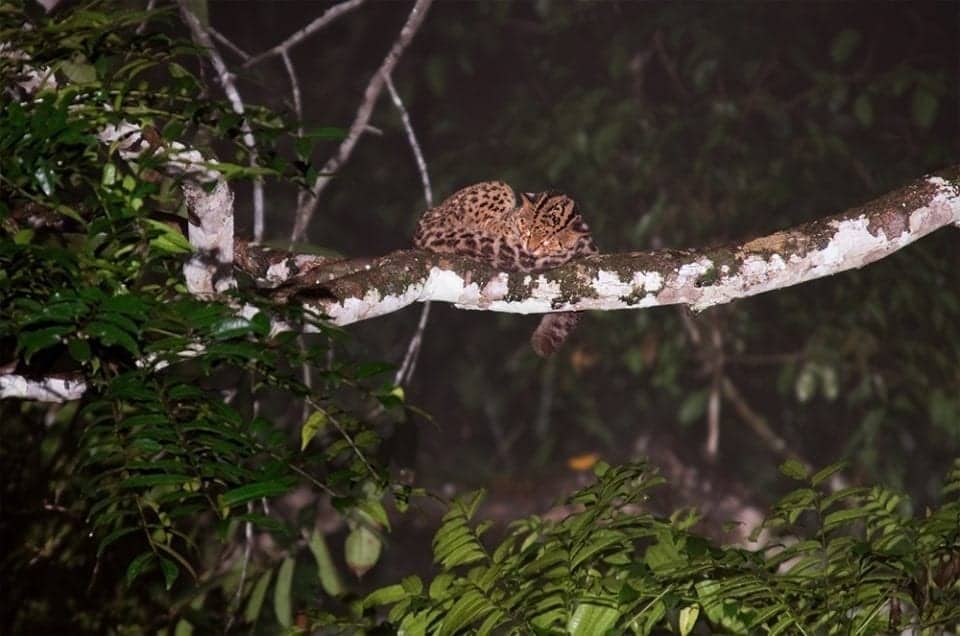
By the time we reached kilometre 5, it started raining and within minutes the rain turned into a proper tropical downpour. We were soaked to the bone in seconds. The deluge continued for about half an hour, dowsing our hopes of spotting the cat.
But once the rain finished, we continued on our way and when we arrived at kilometre 10 marker, we discovered the cat snoozing peacefully on a branch of a tall tree.
It was curled into a fluffy ball, sheltered from the rain by the thick canopy. It was so content on its high perch that it paid no attention to us gawking at it from below.
After a while, it got up, stretched and spent the next ten minutes cleaning it’s beautifully patterned fur. The name Marbled cat comes from the beautiful blotches on its coat – dark in the outline and light in the centre.
Marbled cats have the amazing ability to climb down trees headfirst, using their flexible ankle joints. So we kept watching it, hoping to see it in action.
But once it decided it was sufficiently clean, it settled back for another snooze, using its exceptionally long and fluffy tail as a pillow. It was such an incredible experience watching this elusive wild cat in its own home, I almost had tears in my eyes. by Margarita of The Wildlife Diaries
Andean Cock of the Rock
While on a recent trip to the beautiful birding hotspot of Mindo, Ecuador, I had the incredible chance to meet a rarely seen and stunning female Andean Cock of the Rock.
The males of this unique and brightly coloured crimson bird are known for putting on a raucous show every morning in what is called a “lek”, where they get together to dance and sing with the aim of attracting a female.
The fairer half of the species though is seldom sighted, as they prefer to hideout deep in the rainforest canopy. With this in mind, I was surprised to see the owners of the San Tadeo bird blinds holding a female cock of the rock in their hands! The poor thing had been hit by a car and was completely stunned.
They picked her up from the side of the road and brought her over to me to take care of her while they went on with their business. I held her for a bit and stroked her immensely soft feathers, but after pooping three times in my hands (a good sign!), I set her down in a safe, sheltered place and put some water beside her so she could rest and rehydrate.
After about an hour, she pumped her wings twice and flew to the top of a nearby tree where she rested for another 30 minutes or so. Following that, this tough as nails bird took off over the valley and disappeared into the forest, where I hope she was able to live a long and healthy life. Her pluckiness, ability to overcome the odds and inimitable beauty left an impression on me that I won’t soon forget. For this, she is my travel spirit animal. by Phillip & Thea of Zen Travellers
A Deer Encounter in Japan
I’m a huge cat lover, and everywhere I go, I always pet cats I see, including stray ones. One memorable animal encounter, however, didn’t involve a cat, but a deer in Nara, Japan.
Nara is best known for its deer park, where hundreds of deer roam free. They’re protected by the government, and in that park, it’s the humans who are interlopers, not the deer. Feeding the deer is allowed and even encouraged. When you walk around the park, you will see vendors selling deer biscuits. When the deer see you with it, you’ll be surrounded, and they’ll start bowing for you to feed them.
I didn’t buy a biscuit but this deer (shall we call him Nariko?) followed me around and even posed by me several times. He didn’t seem to mind that I didn’t have any food with me; he was quite content just walking beside me and preening in photos.
When you visit Kansai Region, Japan, make sure to go to Nara and hopefully you’ll also see Nariko or your own spirit animal there. by Aleah of Solitary Wanderer
Marmots in Ladakh
Well, while travelling, wildlife is definitely one of the interesting aspects. Though we are not much into wildlife, seeing them in their own natural habitat is a great high. And sometimes, we see these animals in places that we had not imagined! We first saw marmots on our way to Pangong Lake from Leh in Ladakh. Marmots are basically small animals of the size of housecats living in mountainous areas. The ones found in Indian sub-continent and Tibet are known as the Himalayan marmots.
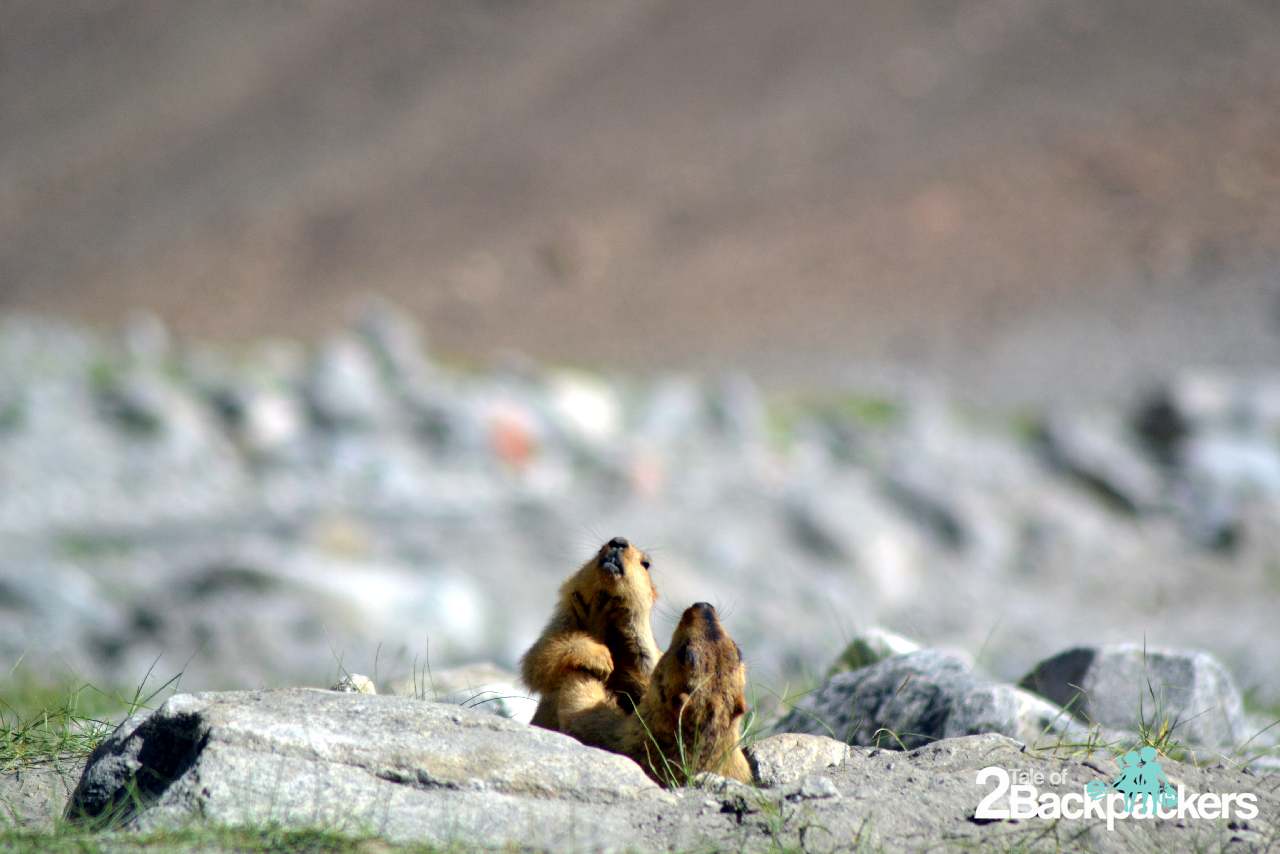
These animals are really cute, roaming all around in the fields. The best part was that they were quite friendly and social and were not running away seeing humans. It is said that the marmots are highly social among them and uses whistles to communicate with each other.
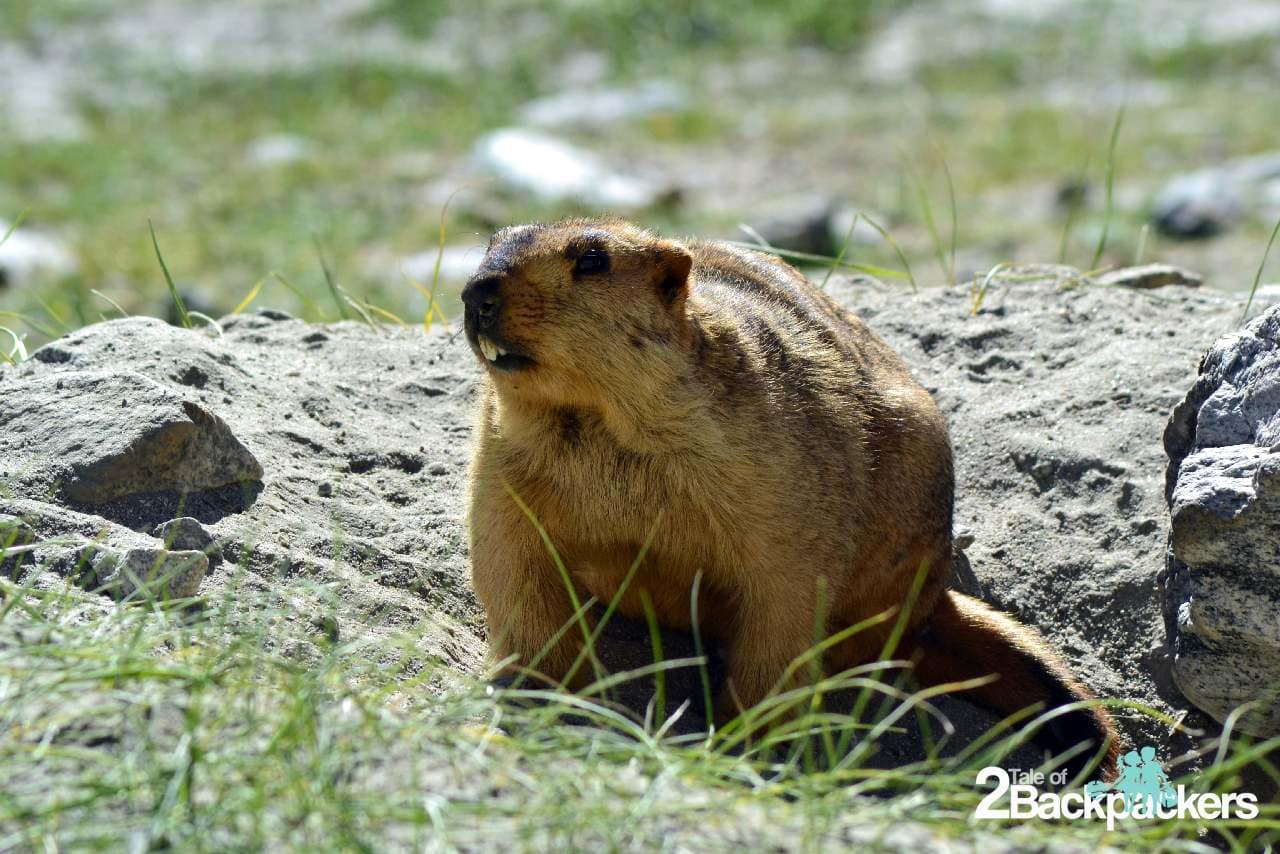
We saw them standing on their feet and looking at the few travellers that were there. A guy also went forward and shook his hand with one of the marmots! Friendly and lively, we found the marmots quite interesting. They may not be grand and unique, but the marmots were quite a thing to watch in the middle of a long road trip. It brought a smile to all of our faces and that is what is required for a tiring trip. by Amrita & Agni of Taleof2BAckpackers
Not a dog or a cat
My animal I became attached to was not a cute little puppy or a purring kitten. Nope, not even a bird, bunny, calf or lamb. I’m sure you won’t guess it. Donkey, yes you read right, a donkey. I couldn’t help it. He was so adorable and sweet.
Let me start from the beginning. My husband and I travelled to Greece for a three-week vacation. While on Santorini we stayed a little away from the crowded Oia and went to the wine part of the island, Megalochori. Each morning we went on our exercise walk around the town. From the very first day of our stay we would walk past a home with an area that had a handsome donkey.
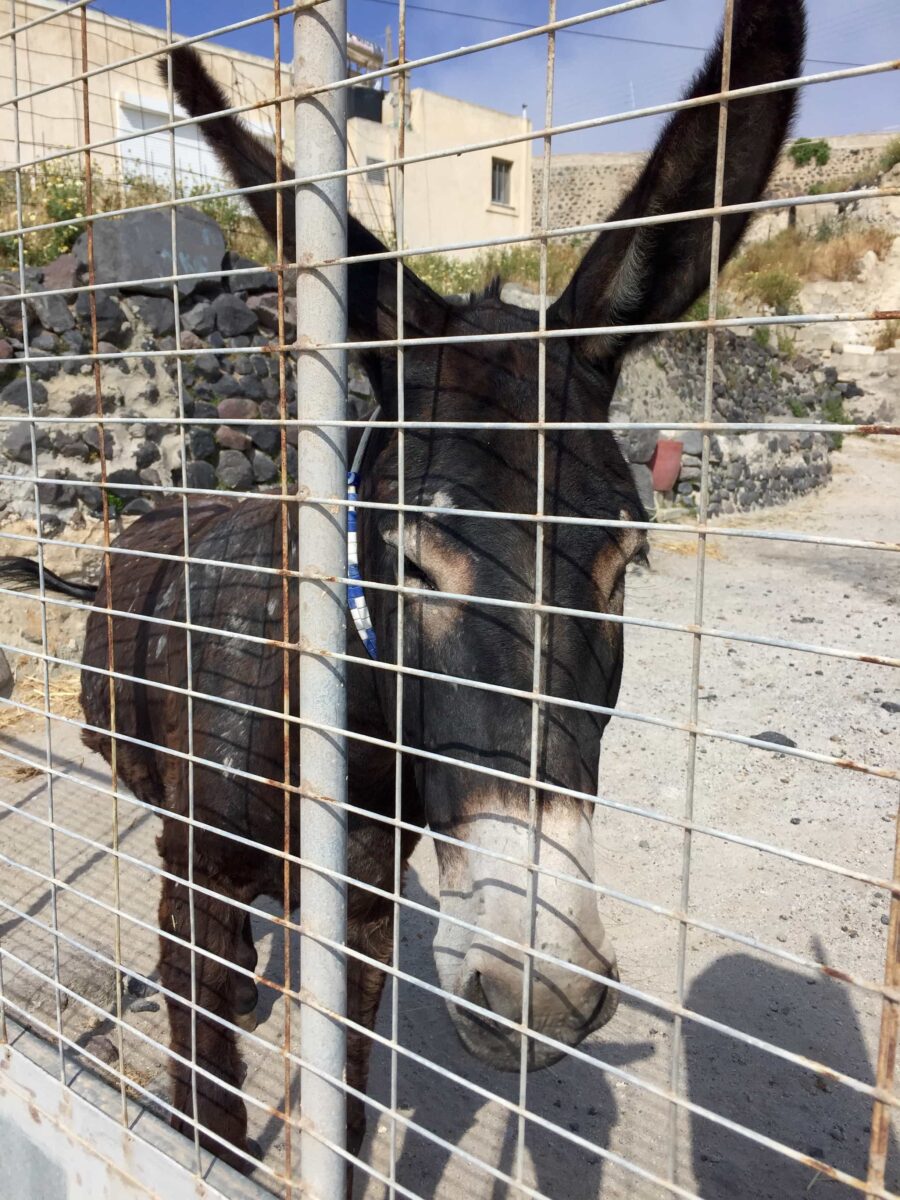
This donkey would come right up to us, just wanting some attention. Soon, he seemed to know our schedule and would be waiting for us. I never brought him food, so it really showed he just was a friendly little guy.
Well, I got attached, actually asked my husband if we could bring him home with us. That didn’t go over good. I was really sad when it was time for us to leave Santorini. But I was able to take a quick walk over before leaving. For some reason, this handsome little donkey will always be my first thought when I think back of Santorini. by Sherrie of TravelbyaSherrieAffair
Canadian Bison
Last May my husband and I visited Edmonton and decided to spend one afternoon touring Elk Island, National Park. The park is known for its beautiful scenery and for the opportunity to see bison, even though we were warned by the rangers at the entrance that they’re not always likely to be seen.
So, my husband and I started driving slowly on a section of the park called ‘Bison Loop? and to our amazement, we spotted an animal almost straight away – and stood speechless. I immediately felt a connection with that animal, and we stood for a few seconds just looking at each other in the eye, while my husband took this picture.
I would like to specify that even though it looks like we were standing very close to the bison, we weren’t in fact – the pic was taken with a long lens, and we were, in fact, a few hundred feet from the animal. I know that bison can be aggressive, and when I posted this image on insta a few people commented ‘he’s about to charge’. I can assure it was a beautiful and peaceful moment. I observed this huge, peaceful animal for a while until it ran off deep into the woods, back to its life in the wild, and I climbed back into the car, remembering the precious moment we shared. by Margherita of The Crowded Planet
What’s a Tarsier?
The Tarsier is an animal of the Tarsiidae family, and they all its species live in Southeast Asia. The Philippine Tarsier is one of the smallest primates in the world, and they are endemic to the country. I first learned about the Philippine Tarsier before I traveled to Cebu and Bohol for the first time.
They’re the weirdest and cutest animals I’ve ever seen in real life, and I have seen a few weird creatures out there on my travels. The Philippine Tarsier is like the size of a human hand, and the eyes are really big compared to the rest of the body. The Philippine Tarsier is a nocturnal animal, and they live in the forests of Bohol.
A pretty interesting fact about them is that if they hear too loud noises or get scared from a camera flash, they might be so upset or afraid that they bash their head against a tree to kill themselves. Quite a peculiar response to getting scared.
They also do the same in captivity, then they bash their heads against the cage, so it’s essential that these creatures are left alone in the wild, or at least looking at them from a safe distance without talking or making noises. I was about 3-5 meters away, and that’s fine as long as you’re quiet and walk around slowly.
I will never forget then this cute little fella opened its eyes! It was a feeling of being inside a Nat Geo Graphic documentary in real life.” by Alex of the Swedishnomad
Hector’s dolphins
I’ve always had a great interest in marine mammals. Whenever I travel somewhere new, one of the first things I look into is whether there are any dolphin/whale-watching safaris nearby. Or, failing that, a scenic boat trip where I always keep my eyes to the water ‘just in case!
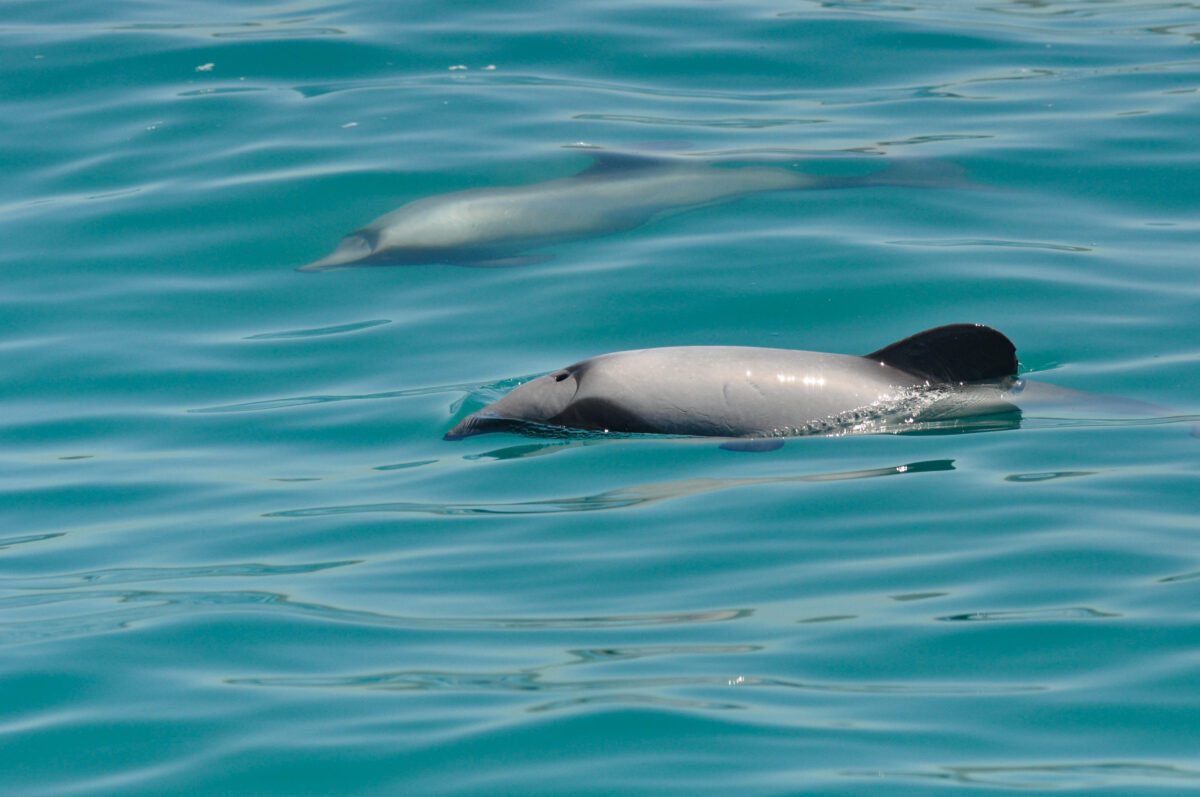
So naturally, the last time I visited my home country of New Zealand, I went in search of the country’s native dolphin – Hector’s dolphins. Hector’s dolphins are the world’s smallest dolphins and they’re naturally very curious and playful. Unlike some other species of dolphins, they swim in small pods of only a few dolphins – usually of the same sex. Sadly though, their numbers are in decline and they are now on the endangered species list.
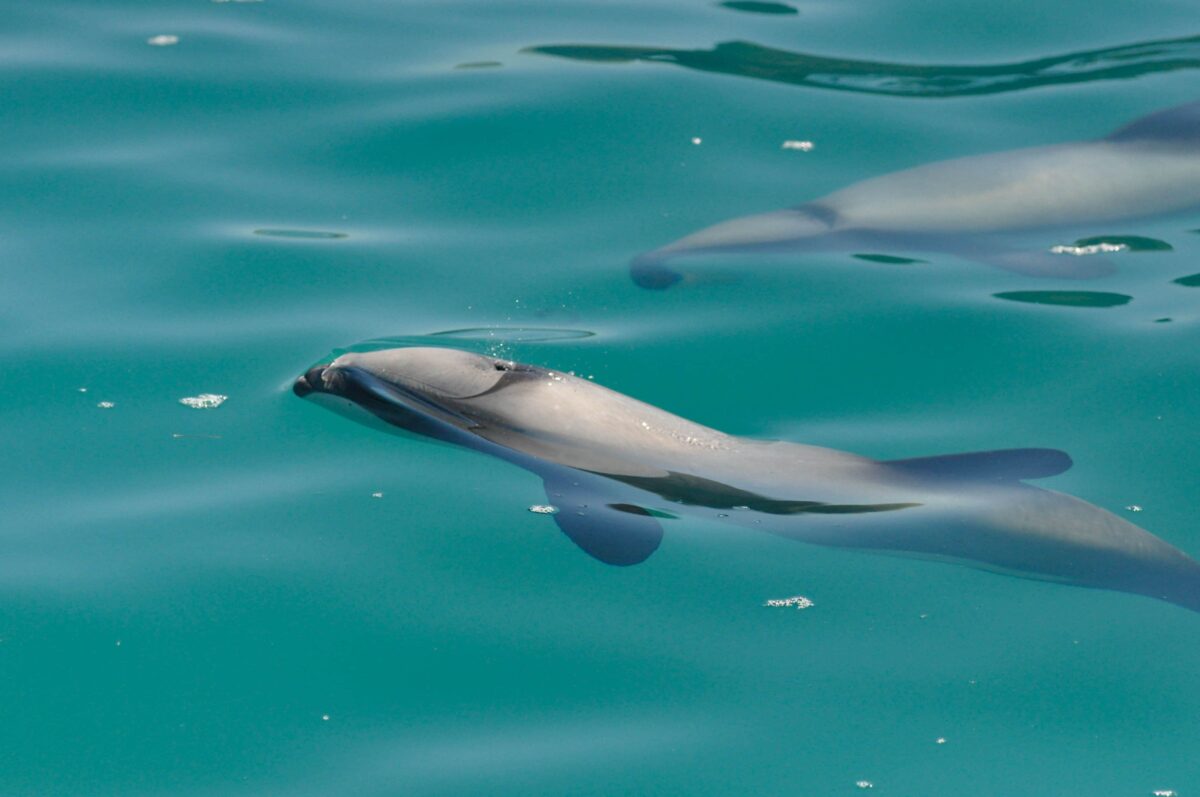
On the Banks Peninsular, near Christchurch in the South Island, they have a haven in the form of a marine mammal sanctuary. This has helped protect the numbers of Hector’s dolphins living in New Zealand and resulted in a high concentration in the area.
From Akaroa, you can take a short boat trip to the mouth of the Akaroa harbour to see the dolphins, and swim with them. I took the option of swimming with the dolphins and it was one of the most incredible experiences of my life! Watching these deft swimmers swoop and dive around you in the water is just amazing. And it has firmly cemented my love for marine mammals even further and highlighted the importance of protecting the few thousand that are left. by Nadine of LeLongWeekend
What is a Guanaco?
A few years ago, I went to Chile with a few friends, and during our planning, all of us became fascinated with the idea of seeing a llama for several reasons – they are cute, they look like a mix of a camel and a sheep, and they spit. To our disappointment, at the area where we were going – precisely, the Chilean Patagonia, at the extreme South of the country – llamas are not common. So we got excited when we found out that instead of llamas, we could see their closest relative – the guanaco.
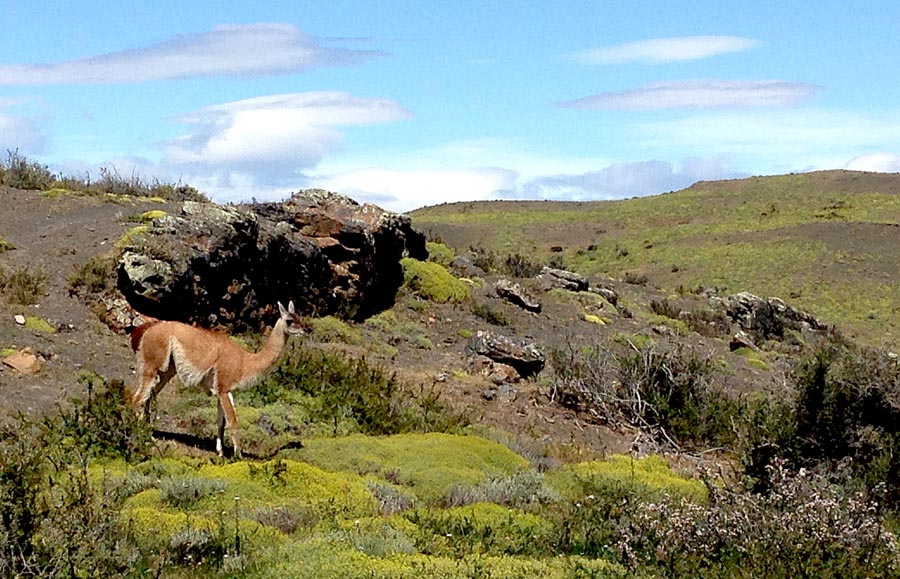
Similar in size, but with a brown coarse on the back and white on the belly, guanacos are native to mountain areas in South America – countries like Bolivia, Peru, Chile, and Argentina. They are common in the Patagonia region, especially inside the Torres Del Paine Park, in Chile. They are actually related to camels, live at high altitudes, and can go without water for 4 days.
So one morning, there we were inside a tour bus, happily clicking pictures of all the guanacos and beautiful landscapes we could find – and trust me, that place is BEAUTIFUL – when suddenly, someone shouted inside the bus: “this guanaco is having a baby!!!”. An absolute frenzy took over, and the bus stopped so we could see this beautiful and absolutely unexpected miracle of nature. There she was, mummy guanaco standing up giving birth to a chulengo (how baby guanacos are called). We watched until the chulengo was completely born, for around 15 minutes. It’s impressive how some animals are already born standing up and walking. It was a really memorable experience and all of us fell in love with these unique beautiful animals! by Leticia of Happee Travelers
Meeting Oskar in West Sweden
We didn’t know what to expect when we arrived at West Sweden’s Wrågården Farm, 15 minutes late to meet owner Bo Alexandersson because the place was so “off the grid” that our GPS couldn’t find it. The Scandinavian farmer throws me for a loop with his cowboy hat, off-kilter personality, and playful sense of humour.
Bo tells us his backstory as we tour the 43-acre property in his golf cart. The farm’s been in his family since 1895. After growing up there, he moved to Canada and made his living as a blacksmith and rodeo rider. While there, he fell in love with Wood Bison. As he tells us this story, we’re surrounded by two dozen Bison, all descended from ones he imported to Sweden. There’s also a herd of Scottish Highland cattle in a neighbouring field. But they’re not the focus of our story either.
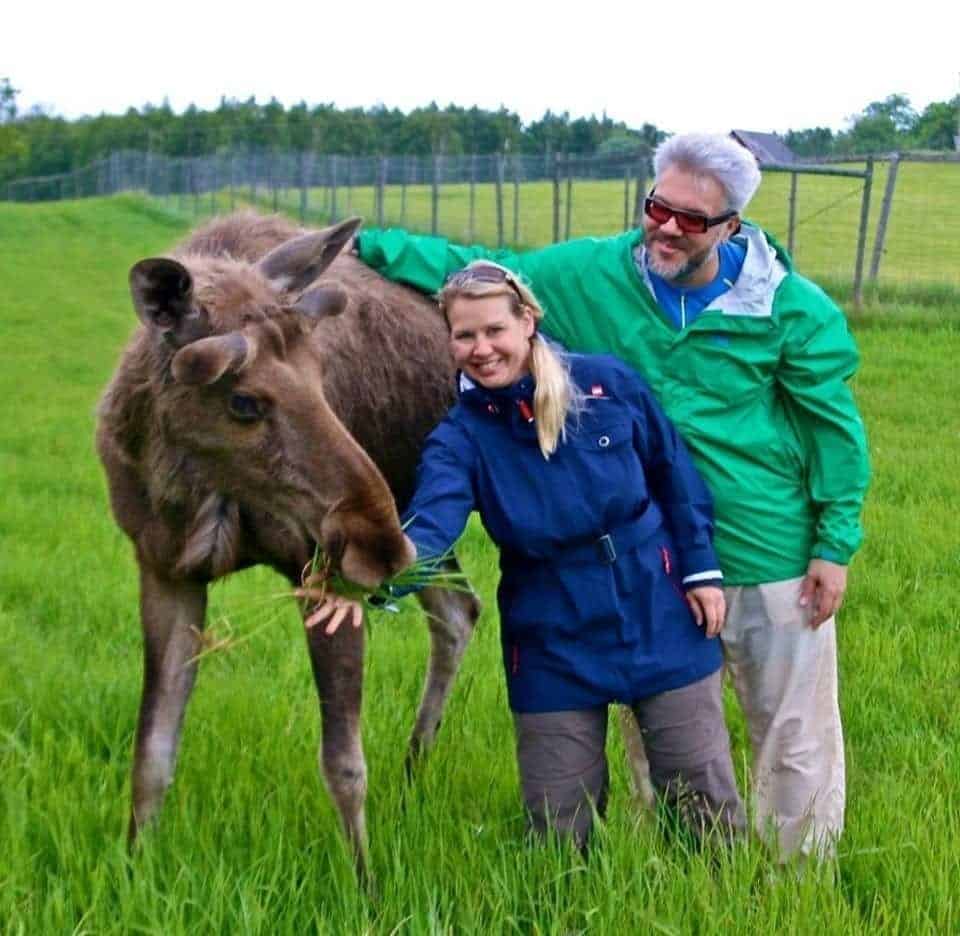
By this point, you’ve likely gathered that Bo is quirky. So when he asks us if we want to meet his dog, the twinkle in his eyes suggests there are shenanigans afoot. As Bo shouts, “Oskar! Oskar!!!” a massive moose comes running towards us. Bo hands Mary a banana and– after greeting the man who hand-raised him affectionately– Oskar immediately gobbles it up. Within minutes we are both covered in moose drool, laughing hilariously as Oskar sniffs us for more treats. from Bret of Green Global Travel
We hug and pet Oskar. We get to feed Oskar. We have a picnic with Oskar while his lady moose friend, Ebba, comes within 50 feet to show us their twin babies, born just two weeks before our visit. The look on Bo’s face is sheer joy, and the feeling is obviously reciprocated. Watching Oskar lean in for a kiss, I immediately come to think of Alexandersson as “the Moose Whisperer.”
So what’s your animal friend or a favourite from your travels and do you travel animal friendly?
Pin it for later

